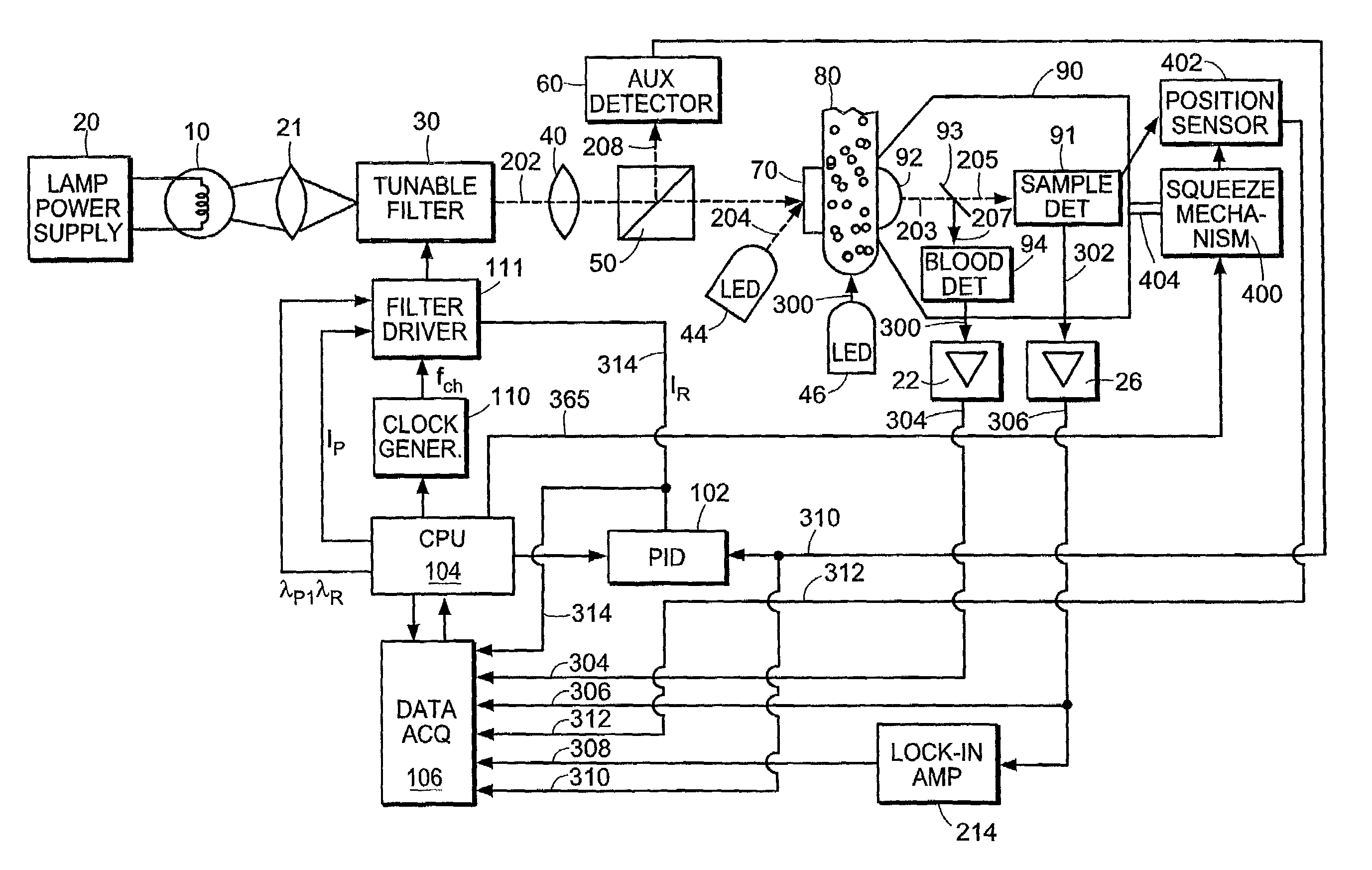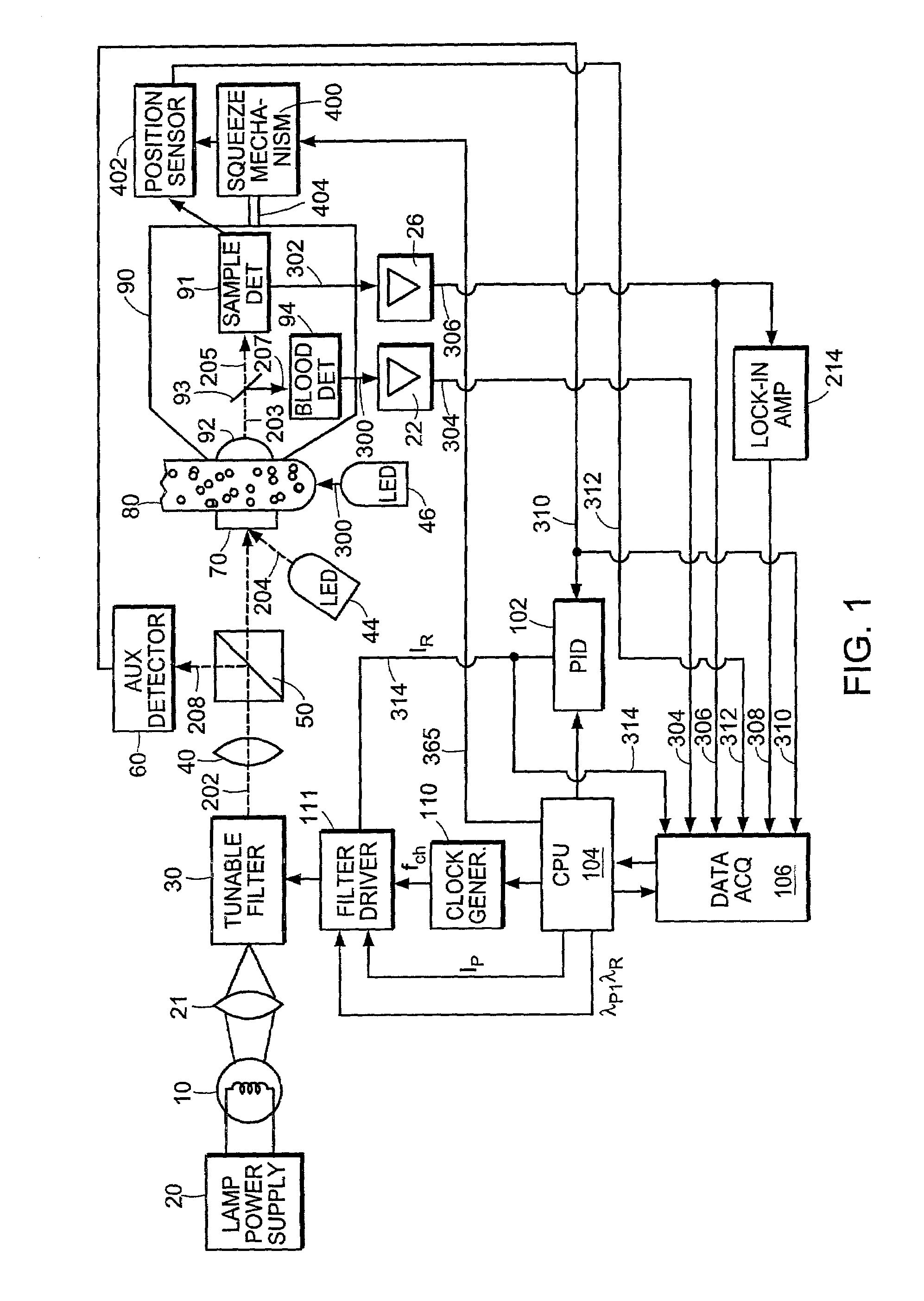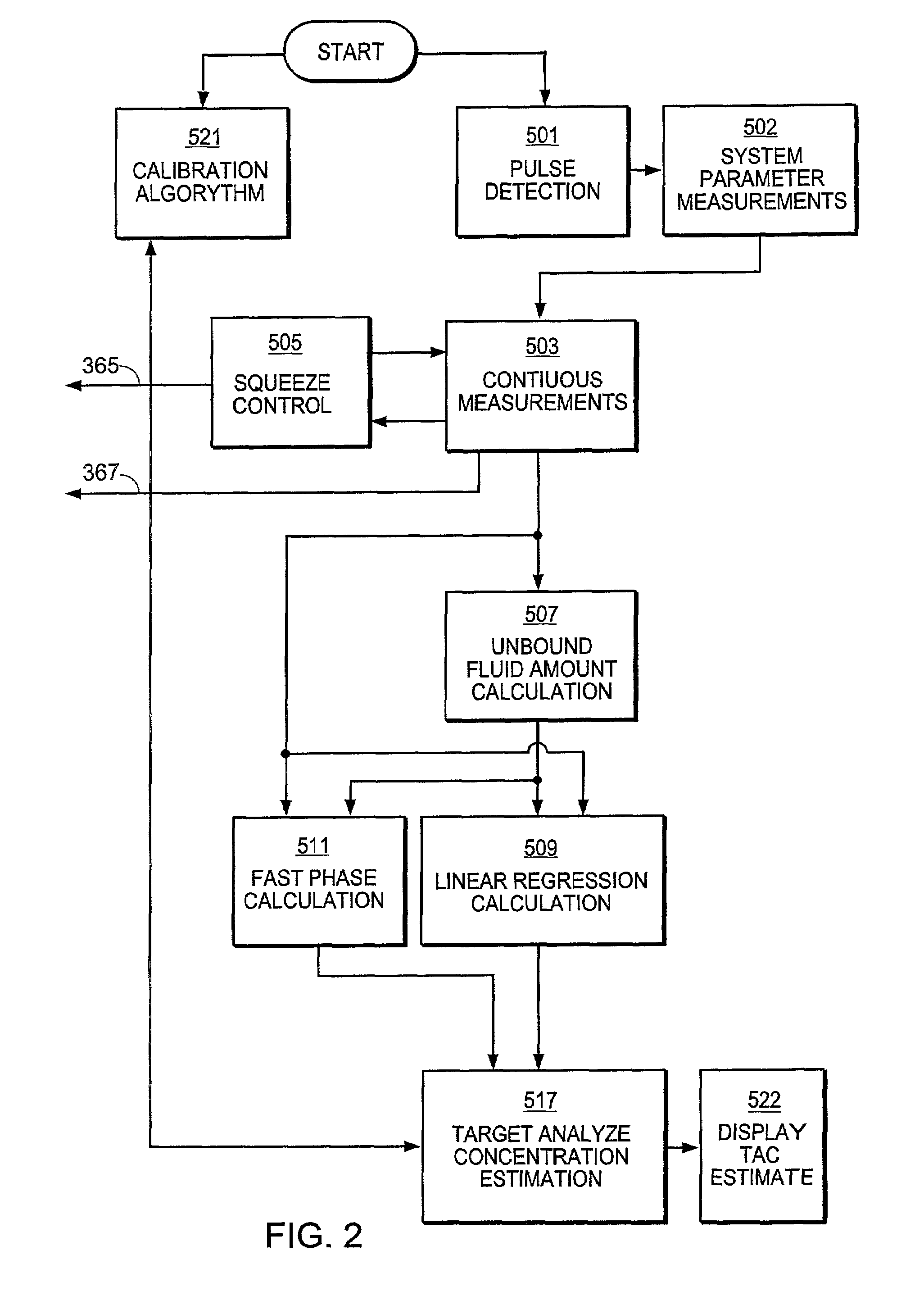Non-invasive substance concentration measurement using and optical bridge
- Summary
- Abstract
- Description
- Claims
- Application Information
AI Technical Summary
Benefits of technology
Problems solved by technology
Method used
Image
Examples
Embodiment Construction
[0023]The features and other details of the method of the invention will now be more particularly described with reference to the accompanying drawings and pointed out in the claims. It will be understood that the particular embodiments of the invention are shown by way of illustration and not as limitations of the invention. The principal features of this invention can be employed in various embodiments without departing from the scope of the invention.
[0024]One embodiment of an apparatus for performing a method of the invention to measure glucose concentration in blood based on transmitted light through the sample will now be explained in detail in connection with FIG. 1. A similar apparatus may be designed which uses reflected light instead of transmitted light.
[0025]The light source 10 is preferably a quartz-halogen lamp powered by power supply 20. Using optical elements 21, the lamp light is directed to an optical tunable filter 30. The characteristics (wavelengths, intensities...
PUM
 Login to View More
Login to View More Abstract
Description
Claims
Application Information
 Login to View More
Login to View More - R&D
- Intellectual Property
- Life Sciences
- Materials
- Tech Scout
- Unparalleled Data Quality
- Higher Quality Content
- 60% Fewer Hallucinations
Browse by: Latest US Patents, China's latest patents, Technical Efficacy Thesaurus, Application Domain, Technology Topic, Popular Technical Reports.
© 2025 PatSnap. All rights reserved.Legal|Privacy policy|Modern Slavery Act Transparency Statement|Sitemap|About US| Contact US: help@patsnap.com



